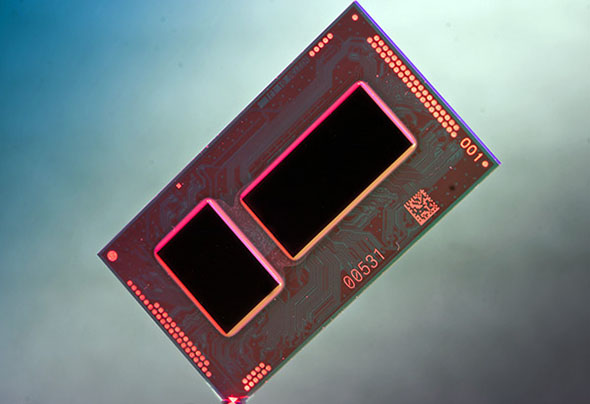Intel’s Core M Processor To Reinvigorate Hybrid Laptop Tablet PCs With Super-Thin, Powerful Designs
It's no secret that the past few years in mobile have been rough for Intel, largely due to the fact that ARM has proven itself to be an intense competitor. When smartphones exploded years ago, and tablets later on, it was ARM that dominated the landscape, and today, nothing has changed. ARM has even found itself in some ultra-portables, with the NVIDIA Tegra 2-based ASUS Transformer TF101 being one of the first.
Clearly, Intel hasn't been pleased with this, and while its releases in recent years haven't given us the hope that the company would soon find itself in a lot more ultra-portable mobile devices, Core M changes that outlook completely, at least for me. In many different ways, the artist formally known as Broadwell Y should give the likes of ARM a reason to raise an eyebrow - Intel's storming in hard, and as great competition always does, consumers will stand to benefit.

As Dave covered in our initial look at Core M, Intel's made some significant advances with this chip in terms of both power consumption and performance. One key reason for such improvement is the fact that Core M is built on a 14nm process - becoming the first processor to be. Along with other architectural improvements, Intel's boosted clock-for-clock performance by up to 82% for video conversion, 47% for 3D graphics, 19% for office productivity, and about 12% for using Web applications.
Performance boosts are nice, but to some, battery-life gains are better. Intel has those here as well, with up to a 103 minute gain for video playback, and nearly an hour in full-system use, as measured by MobileMark 2012. All of this combined is significant. On the desktop side of things, it's rare to see an architecture drop that gives anyone a strong pull to upgrade - even if they have a two or three generation old PC. Here, though, Intel's given us some major advances, where if someone upgrades from a year-old model, they are going to notice the differences.
As much as I consider myself to be a devout desktop user, I appreciate these kinds of gains in mobile, and for the first time in a while where Intel's concerned, I'm genuinely excited about what Core M brings to the table. I also feel like there's some real momentum here, so while Core M is impressive, I can only imagine what future iterations of the mobile Core M series will be like.

Interestingly, while Core M complements tablets very well, so far we have heard very little about dedicated tablets being released. Instead, we're learning of ultra portables, such as the ASUS UX305 seen above, Dell's Latitude 13 7000 convertible, and even some high-end ENVY x2 convertibles from HP, which we talked about yesterday.
It goes without saying that we'll be learning a lot more about Core M-based portables coming soon, and they may very well become some of the hottest products this holiday season.

